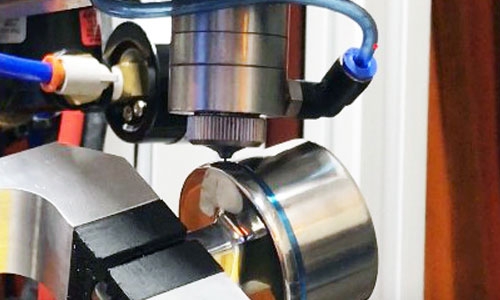选择适合您的表面处理工艺的掩膜应用方法
采用蜡、胶带或漆掩膜应用方法来保护其部件免受恶劣表面处理工艺喷砂、酸洗、电镀和阳极氧化等工艺非常不精确,而且耗时。有些方法需要手工操作,有些则需要使用溶剂,这会降低生产率并增加废品和返工。
SpeedMask® 产品可快速涂抹一层,在几秒钟内用UV/可见光固化,并可通过焚烧或剥离轻松去除。它们可替代劳动密集型应用技术,并在表面处理过程中提供卓越的保护。除了快速涂抹、速度更快和简单去除的优点外,SpeedMask掩膜是单组分的,不添加任何溶剂,使其成为致力于实现绿色倡议的企业的环保选择。许多 SpeedMask 产品也是 100% 有机材料。
前决定使用 SpeedMask掩膜,知道如何运用它以获得最佳结果非常重要。
半自动化应用
半自动化工艺使用经过编程以遵循精确规格和设计的机器(XYZ 系统)将掩膜精确地分配到组件上。此方法有助于减少人为错误并提供一致的材料覆盖,以满足严格的质量要求。
- 专为重复性和准确性而设计
- 适合中等批量应用
- 融入在线固化操作
- 平坦表面,包括印刷电路板
采用机器人单元应用实现完全自动化
机器人单元系统的全自动化用于大批量精密制造,可能需要快速调整程序或更改设计。使用带有机械臂的自动分配阀将材料分配到不平坦的表面上,可以精确掩膜具有复杂几何形状和不规则形状的部件,而这些部件很难精确地手动遮盖。这种方法可以帮助提高产量并减少返工和废品等质量问题。
- 覆盖复杂形状的一致覆盖,以支持大批量生产
- 最高精度的放置和掩膜层
- 可编程以适应多种部件配置
手动应用(喷雾和珠子)
尽管半自动和全自动应用方法精度高,可提高生产效率,但在某些情况下,仍需要手动掩膜。对于需要灵活性和适应性的小批量生产,或当大面积表面需要全面覆盖和保护时,可能需要通过高速喷雾或珠子手动涂抹掩膜剂。此外,这些应用方法可以整合到现有系统中以补充该过程,提供一定程度的自动化和定制。
- 需要遮盖大面积表面
- 支持小批量生产
- 手动分配阀可以与机器人电池掩膜结合使用
刷涂应用
这种应用方法适用于小批量、短期、小众项目,例如原型设计或返工后需要修补的组件。重要的是要记住,刷涂方法可能会导致掩膜覆盖不均匀,当需要均匀、精确的应用时可能不适合。
- 最适合短期生产、原型制作以及维修/返工后的修补
- 难以实现均匀覆盖
无论您选择自动还是手动掩膜方法, 速效面膜,您只需四个简单的步骤即可涂抹、固化、处理和去除掩膜!其他优点包括:
- 符合复杂的配置
- 喷涂或手工施工
- 材料应用无需因设计变更或新组件而进行额外投资
- 经过适当的光固化后,去除掩膜后表面不会留下任何残留物
- 经过正确固化后,遮蔽部件即可立即投入生产
- 部分产品可使用荧光进行质量检验
如果您准备讨论您的项目需求,请联系我们的应用工程团队进行咨询。


